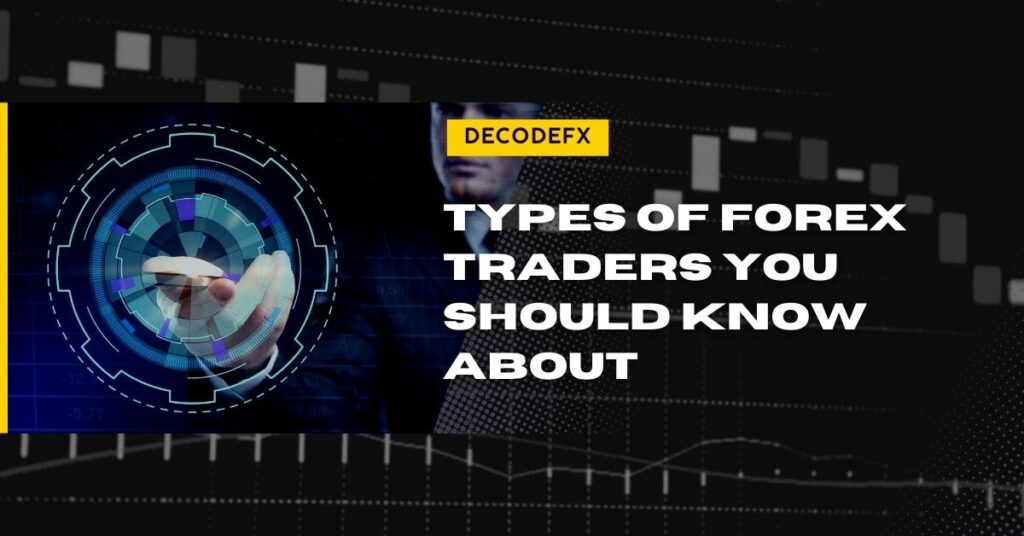There are four types of Forex traders- the scalper, the day trader, the swing trader, and the position trader. Each type of trader has their own unique trading style and strategies. This article will explore each type of trader in depth, and provide tips for how to become a successful forex trader regardless of your trading style.
What Is Forex Trading?
Forex trading is the simultaneous buying of one currency and selling of another. Currencies are traded through a broker or dealer, and are traded in pairs. For example, the EUR/USD pair is the euro versus the U.S. dollar. When you buy a currency pair, you buy the base currency and sell the quote currency. If you buy the EUR/USD pair, you would buy euros and sell dollars.
The base currency is the one you are buying, and the quote currency is the one you are selling. For example, if EUR/USD is trading at 1.20, that means it would take $1.20 to buy one euro. The exception to this is the Japanese yen, which is quoted in pairs without a decimal. For example, USD/JPY might be quoted as 113.00 instead of 1.1300.
How Does Forex Trading Work?
When you trade in the forex market, you buy or sell in currency pairs. The reason you must trade in pairs is that foreign currencies are traded as relative values. This means that the value of one currency is always relative to the value of another currency.
So when you buy EUR/USD, you are buying euros and selling dollars. If the euro goes up in value against the dollar, then your trade will be profitable. Conversely, if the euro goes down in value against the dollar, then your trade will be unprofitable.
There are two prices associated with every currency pair-the bid price and the ask price. The bid price is the price at which you can sell the base currency, and the ask price is the price at which you can buy the base currency.
The difference between the bid price and the ask price is called the spread. The spread is how forex brokers make their money-it is simply the difference between the bid and ask prices.
Types Of Forex Traders
Scalpers
Scalpers are the shortest-term traders in the forex market, and they attempt to profit from small changes in currency prices. Scalpers hold their trades for only a few seconds to a few minutes, and they make many trades throughout the day. They use very short-term charts, such as one-minute or five-minute charts, to find small price movements that they can exploit.
When scalping, you need to identify the trend. You can do this by looking at a longer-term chart, such as a four-hour or daily chart. Once you have identified the trend, you can then look for a short-term pullbacks or entry signals. These can be gotten through indicators and forex analysis tools and theories like Elliot waves, Smart money concepts, and so on.
Once you have found a short-term pullback, you can then enter a trade using a lower time frame chart, such as a one-minute or five-minute chart.
The main advantage of forex scalping is that it allows you to take quick profits on small price movements. This can add up to big gains if you are able to scalp multiple times a day.
Another advantage of scalping is that it gives you a lot of practice in trading. By taking many trades throughout the day, you can quickly learn what works and what doesn’t.
The main disadvantage of forex scalping is that it can be very stressful. You need to be constantly monitoring your charts and making split-second decisions. This can be very difficult for some people.
Day Traders
Day traders are slightly longer-term traders than scalpers, and they hold their trades for minutes to hours. They use short-term charts, such as 15-minute or 30-minute charts, to find small price movements that they can trade.
When day trading, you need to identify the trend. You can do this by looking at a higher time frame chart, such as a four-hour or daily chart. Once you have identified the trend, you can then look for entry patterns using different day trading strategies. These day trades are entered and exited in the same day but may be held through different trading sessions.
Once you have found a short-term pullback, you can then enter a trade using a short-term chart, such as a 15-minute or 30-minute chart.
The main advantage of forex day trading is that it allows you to take quick profits on small to medium price movements. This can add up to big gains if you are able to day trade multiple times a week.
Swing Traders
Swing traders are intermediate-term traders who hold their trades for days to weeks. They use daily or weekly charts to find larger price movements that they can take advantage of.
When swing trading, you need to identify the trend. You can do this by looking at a longer-term chart, such as a monthly or weekly chart. Once you have identified the trend, you can then look for a short-term pullback against the trend.
Once you have found a short -term pullback, you can then enter a trade using a shorter-term chart, such as a daily or weekly chart.
An advantage of forex swing trading is that it gives you time to analyze your trades. By holding your trades for days or weeks, you can see how well they perform and make adjustments accordingly.
The best forex swing traders are patient and have a long-term perspective. They understand that the market moves in cycles and that there will be ups and downs along the way.
They also have a solid risk management plan. They know how much they are willing to risk on each trade, and they stick to their plan.
Position Traders
Position traders are long-term traders who hold their trades for weeks or months. They use monthly or weekly charts to find longer-term price movements that they can exploit.
When position trading, you need to identify the trend. You can do this by looking at higher time frame charts, such as yearly or monthly charts. Once you have identified the trend, you can then look for a short-term pullback against the trend.
Once you have found a short-term pullback, you can then enter a trade using the entry criteria outlined in your trading plan. The entry could be on hourly, daily, or weekly charts, depending on your strategy.
The main advantage of forex position trading is that it allows you to take quick profits on significant price movements.
The best forex position traders have a solid risk management plan. They know how much they are willing to risk on each trade, and they stick to their plan.
How To Determine Which Type Of Forex Trader You Are
Source: Pixabay
The best way to determine which type of forex trader you are is to experiment with different styles and see which one fits you best.
If you are the type of person who likes to take quick profits on small price movements, then forex scalping or day trading may be for you.
If you prefer to take quick profits on medium to large price movements, then forex swing trading may be for you.
And finally, if you are the type of person who prefers to take quick profits on large price movements, then forex position trading may be for you.
Whatever style you decide to trade, make sure that you have a solid risk management plan in place. This will help you stay disciplined and prevent you from overtrading.
Use DecodeFX and find out what type of Forex trader you are
Finally, there are four main types of forex traders-the scalper, the day trader, the swing trader, and the position trader. Each type of trader has their own unique trading style and strategies. We have explored each type of trader in depth and provides tips for how to become successful at forex trading. It is essential to experiment with different styles to see which one fits you best. To do this, signup on a forex trading platform and start trading today!

